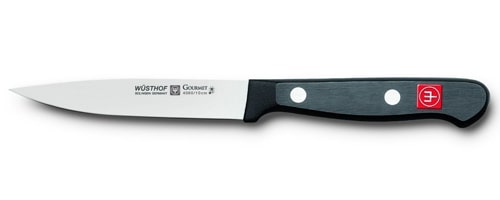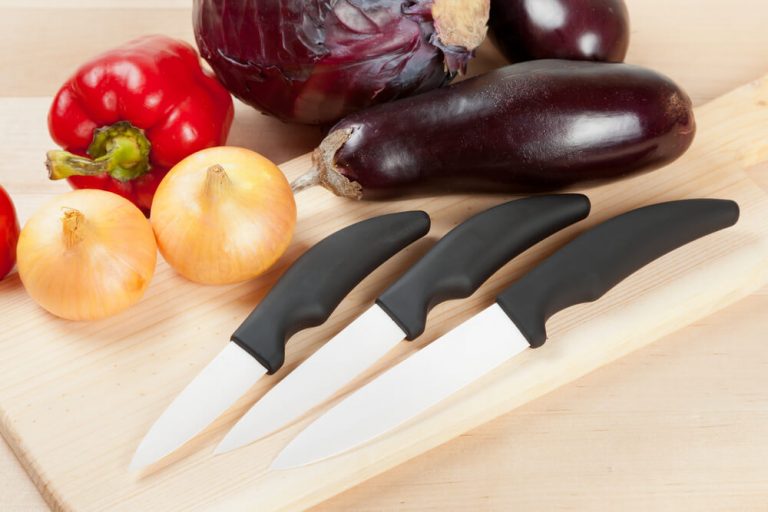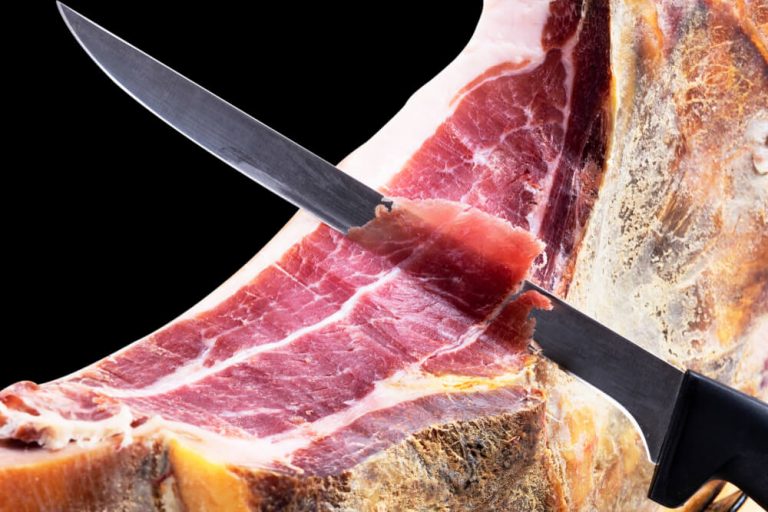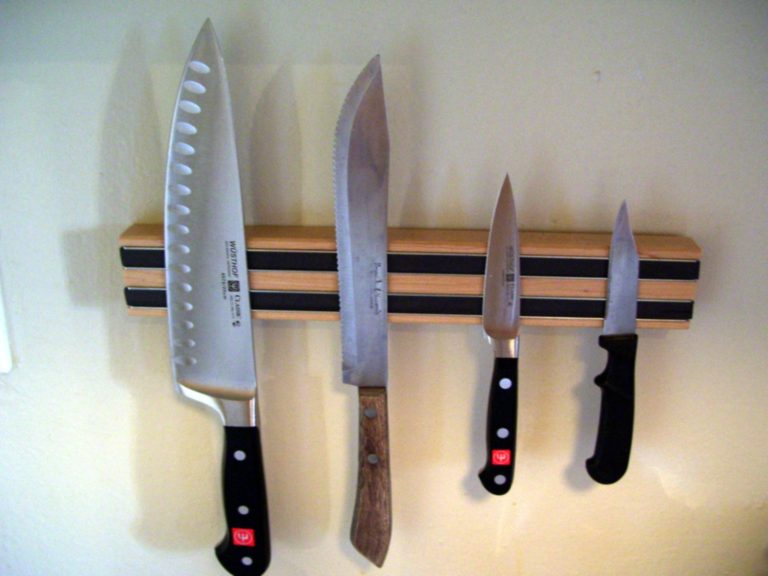Wusthof knives are synonymous with impeccable quality and enduring legacy in the culinary world. Forged in Solingen, Germany—a city famously dubbed “The City of Blades”—Wusthof has been crafting premium knives for chefs and cooking enthusiasts for over two centuries. These knives are revered not just for their sharpness and precision but also for their balance and durability, attributes that have cemented Wusthof’s reputation amongst the pantheon of elite kitchenware. I you care properly then your knife will last for a decade and in this article we will deeply dive into “How to Care for Wusthof Knives: Tips for Lifelong Performance”
However, the superior performance and longevity of Wusthof knives are not merely a product of their exceptional craftsmanship; they also depend on the meticulous care and maintenance by their owners. Properly caring for these knives ensures they remain a stalwart ally in the kitchen, capable of executing the most delicate or demanding culinary tasks with ease. From precision cuts that respect the integrity of fresh ingredients to the relentless reliability needed during a dinner rush, a well-maintained Wusthof knife is indispensable.
This guide is crafted as an essential resource for anyone who takes pride in their kitchen tools and seeks to uphold the highest standards of culinary excellence. Through detailed insights into daily maintenance routines, sharpening and honing techniques, storage solutions, and strategies for addressing wear and tear, we aim to equip you with comprehensive knowledge to preserve the edge and beauty of your Wusthof knives. Going beyond mere utility, this guide underscores the connection between knife care and culinary artistry. It’s an homage to the tradition of fine cooking and a commitment to ensuring that every meal you prepare is a masterpiece. Let’s embark on this journey to not only extend the life of your Wusthof knives but also to enhance your culinary creations through the art and science of knife care.
Table of Contents
Understanding Wusthof Knives
Wusthof knives, a symbol of culinary precision and reliability, owe their reputation to a rich history and a tradition of unmatched craftsmanship. From the heart of Solingen, Germany, known as the “City of Blades,” Wusthof has been crafting knives since 1814. This section delves into what makes these knives stand out and why their care is not just routine maintenance but a vital aspect of culinary artistry.
The Craftsmanship of Wusthof Knives
History and Heritage
The journey of Wusthof knives began over 200 years ago, in a small factory in Solingen. With each generation, the Wusthof family has honed the craft, blending time-honored techniques with modern technology to produce knives that are cherished by chefs worldwide. This enduring legacy is not just about the longevity of the company but the persistent excellence of its products.
Distinguishing Features
What sets Wusthof knives apart from others is the meticulous process involved in their creation. Each knife is forged from a single piece of high-carbon stainless steel, ensuring strength, balance, and a razor-sharp edge. The precision edge technology (PEtec) guarantees an edge that is 20% sharper with twice the edge retention. Furthermore, the ergonomic handles not only provide comfort but also safety and control, making them a pleasure to use.
The Importance of Proper Care
Impact on Performance and Durability
Regular maintenance of Wusthof knives significantly impacts their performance and lifespan. Sharpening and honing at the right intervals maintain the blade’s sharpness, essential for precision cutting. Cleaning and proper storage prevent damage and wear, preserving the knife’s integrity. A well-cared-for Wusthof knife offers unmatched durability, capable of serving its purpose for decades.
Elevating the Cooking Experience: Professional Chefs’ Testimonials
Chefs around the globe attest to the difference a well-maintained Wusthof knife makes in the kitchen. They highlight how a sharp, well-balanced knife allows for finer control over the texture and presentation of dishes. This precision translates into culinary creations that meet the highest standards of excellence. Chefs emphasize that the care given to these tools reflects the respect for the ingredients, the process, and the culinary art itself. Tales from seasoned chefs reveal how their trusted Wusthof knives have been by their side through countless services, each time proving essential in translating their culinary vision into reality.
In summary, understanding Wusthof knives’ heritage, craftsmanship, and the essential role of care not only enriches one’s appreciation for these tools but also illuminates the path to culinary mastery. Whether you are a professional chef or a home cooking enthusiast, recognizing and embracing the responsibility of knife care can elevate the cooking experience, transforming each meal into a testament to the art of cooking.
Daily Knife Maintenance Routines
Maintaining the quality and longevity of Wusthof knives hinges significantly on daily maintenance routines. From cleaning to storage and usage, attentiveness to these details ensures that each knife remains in top condition, ready to deliver the precision and durability Wusthof is known for.
Proper Cleaning Techniques
Step-by-Step Cleaning Guide
- Rinse Immediately: After use, promptly rinse your Wusthof knife under warm running water. This preliminary step helps remove most of the residue and prevents substances from drying on the blade.
- Wash by Hand: Using a mild dish soap and a soft sponge, gently clean the blade and handle. Avoid using abrasive materials that can scratch the knife surface.
- Clean the Entire Knife: Ensure both sides of the blade and the handle are thoroughly cleaned to remove any food particles and oils that may have accumulated.
- Rinse Again: Rinse the knife under warm water to wash away soap residue. Be cautious to keep the sharp edge pointing away from your hands.
- Dry Promptly: Using a soft, dry towel, carefully dry the knife immediately after washing. Start from the back of the blade and move towards the edge to avoid injury.
Avoiding Water Spots
Water spots can be prevented by ensuring the knife is completely dry before storing it. After towel-drying, you can leave the knife on a drying rack for a few minutes to air dry completely, ensuring there’s no residual moisture.
Storage Solutions
Protecting Knives’ Edges
Knife Blocks: A wooden knife block is a traditional and effective way to store Wusthof knives. Ensure the slots are wide enough to prevent the edges from rubbing against the wood, potentially dulling the blade.
Magnetic Strips: Wall-mounted magnetic strips offer a stylish and space-saving way to store knives. They keep the blades visible and easily accessible, while also preventing edge damage.
Drawer Inserts: For those preferring to keep knives in a drawer, specially designed drawer inserts protect the knives’ edges and organize them neatly, preventing clutter and accidental damage.
Significance of Correct Storage
Proper storage is crucial not only for preserving the knife’s quality but also for safety. Correctly storing knives prevents accidents and ensures that the blades remain sharp and ready for the next use. It also protects the knife’s materials from environmental factors that could lead to deterioration over time.
Proper Usage to Extend Life
Best Practices
Use the Right Knife for the Task: Employing a knife suited to the task at hand minimizes unnecessary wear and preserves the blade’s integrity. For example, use a chef’s knife for chopping vegetables, not for breaking bones.
Cut on Suitable Surfaces: Cutting on hardwood or plastic cutting boards preserves the blade’s edge. Avoid glass or stone surfaces, which can dull the knife quickly.
Common Mistakes to Avoid
Dishwasher Cleaning: The harsh chemicals and high temperatures in a dishwasher can damage the knife’s handle and dull the blade.
Improper Sharpening: Using the wrong sharpening tools or techniques can harm the blade. Stick to recommended sharpening methods for Wusthof knives.
Using the Knife as a Tool: Avoid using your knife for purposes other than cutting food, such as opening packages, which can damage the blade.
Adhering to these daily maintenance routines will ensure your Wusthof knives retain their excellence, bolstering your culinary creativity with tools that are as reliable and precise as the day you first used them.
Sharpening and Honing Your Knives
Maintaining the edge of your Wusthof knives is key to their performance. Sharpening and honing are two distinct processes that play critical roles in the care of your knives. Understanding these techniques and applying them correctly will ensure your knives are always ready for the task at hand.
Honing vs. Sharpening: Understanding the Difference
Distinction Between Honing and Sharpening
Honing is the procedure for realigning the knife’s edge. It does not remove metal but straightens the existing edge, correcting any microscopic bends or folds. This process keeps the knife’s edge straight and in peak condition. Honing should be done regularly, even before each use if possible, to maintain the knife’s sharpness.
Sharpening, on the other hand, involves removing a small amount of metal to create a new edge. This is done using a sharpening stone, rod, or device tailored for this purpose. Sharpening is less frequent than honing and is necessary when honing no longer restores the knife’s sharpness.
When and How to Use Each Technique
Honing: For daily or regular maintenance, run the knife’s edge along a honing steel at an angle of approximately 20 degrees, repeating this action 4-5 times on each side of the blade. This technique maintains the edge and prolongs intervals between sharpening.
Sharpening: Depending on use, sharpen your knives every few months. Use a whetstone or a quality knife sharpener designed for Wusthof knives, ensuring you follow the angle guide typically around 14-20 degrees for Western-style knives.
Sharpening Your Wusthof Knives
Step-by-Step Sharpening Process
- Preparation: If using a whetstone, soak it in water for about 10 minutes until it’s fully saturated.
- Find the Right Angle: Maintain a consistent angle of 14-20 degrees while sharpening. This might require an angle guide for beginners.
- Start Sharpening: Using gentle pressure, slide the knife across the stone in a sweeping motion, from the heel to the tip. Repeat this process 5-10 times on each side, or until you notice the edge’s sharpness returning.
- Check Your Progress: Test the sharpness of your blade intermittently by carefully slicing through a piece of paper or a ripe tomato. This helps gauge the effectiveness of your sharpening without overdoing it.
Recommended Tools
Whetstones or Water Stones: Known for their versatility and effectiveness. Choose a two-sided stone with both coarse and fine grits.
Manual or Electric Sharpeners: Ensure they are compatible with Wusthof knives. Look for models that offer angle control and multiple stages for sharpening and honing.
Honing Steels: Ideal for daily maintenance. Ceramic rods are preferred for their gentle touch on the knife’s edge.
By integrating these sharpening and honing practices into your routine, you ensure your Wusthof knives remain in pristine condition, embodying the craftsmanship and heritage they are known for. This not only maintains the joy of cooking but also honors the tradition of culinary excellence associated with Wusthof knives.
Long-term Knife Care and Maintenance
Ensuring the longevity of your Wusthof knives requires not just daily care but also attention to their long-term maintenance. Adapting your knife care routine to accommodate seasonal variations can help preserve their condition over the years. Additionally, being proactive about addressing wear and tear will keep your knives performing at their best.
Seasonal Maintenance Tips
Comprehensive Maintenance Routines for Different Seasons
- Spring: This is a great time to give your knives a thorough inspection for any signs of wear that may have accumulated over the past year. Implement a deep cleaning of knives and storage areas to remove any built-up residue.
- Summer: With humidity levels typically higher, ensure your knives are thoroughly dry after use and cleaning to prevent rust or corrosion. Consider storing them in a cool, dry place.
- Fall: As the cooking season ramps up, it’s an ideal time to sharpen your knives to ensure they’re ready for the increased usage during holiday preparations.
- Winter: Inspect the handles for any cracks or damage that could be exacerbated by dry indoor air. Apply a food-safe mineral oil to wooden handles to prevent drying and cracking.
Maintenance Checklist to Ensure Knives’ Longevity
- Regular honing to maintain edge alignment.
- Seasonal sharpening to refresh the blade’s edge.
- Visual inspection for rust or corrosion, especially at the start of humid seasons.
- Handle care, including tightening of any screws and oiling of wooden handles.
Handling Wear and Tear
Identifying Wear Signs and Appropriate Actions
Look out for dullness that persists even after sharpening, visible nicks along the blade’s edge, or any signs of rusting. These issues can typically be remedied through professional sharpening or, if minor, with careful at-home maintenance.
Guidelines on When to Opt for Professional Sharpening or Repair
- Professional Sharpening: If honing and home sharpening no longer restore the blade’s sharpness or if you notice significant wear, professional services can give your knife a new lease on life. They can also properly adjust the blade’s angle, ensuring optimal performance.
- Professional Repair: For chips, cracks, or if the blade is bent, seek out professional repair services. Attempting to fix these issues at home can further damage the knife or make it unsafe to use.
By following these seasonal maintenance tips and addressing wear and tear proactively, your Wusthof knives can continue to be a cornerstone of your culinary toolkit for years to come. This holistic approach to care ensures that these esteemed tools retain their functionality and craftsmanship, symbolizing a lasting commitment to quality cooking experiences.
Educating on Knife Care
The mastery of knife care is as essential to culinary success as the art of cooking itself. Whether in the heat of professional kitchens or the comfort of home, the condition of one’s knives can significantly influence the quality of the food prepared. This section explores the pivotal role of knife maintenance in culinary practices and provides resources for further learning and community engagement.
The Role of Knife Care in Culinary Success
Critical Importance in Cooking
In both professional and home settings, the sharpness and condition of knives can make a substantial difference. Sharp knives offer precision and ease, allowing for better texture, appearance, and taste of dishes. Moreover, they enhance safety by reducing the effort needed to cut, thereby lowering the risk of accidents. Maintaining knives, therefore, is not just about preserving a tool; it’s about upholding the standards of culinary creation and safety.
Incorporating Knife Care into Practice
- Regular Maintenance: Incorporate honing into your daily routine, and plan for periodic sharpening, to ensure knives are always ready for use.
- Education: Understand the specifics of knife care, including the differences between honing and sharpening, and how each contributes to a knife’s performance.
- Mindful Use: Choose the right knife for each task and use appropriate cutting surfaces to minimize unnecessary wear.
- Storage: Store knives correctly, using knife blocks, magnetic strips, or protective sleeves, to protect their edges.
By embedding these habits into culinary practices, chefs and cooking enthusiasts alike ensure their tools remain in optimum condition, reflecting their dedication to the craft of cooking.
Resources for Further Learning
Books, Videos, and Courses
- Books: Titles like “An Edge in the Kitchen” by Chad Ward offer in-depth insights into knife selection, care, and sharpening, alongside culinary techniques.
- Videos: Platforms such as YouTube host numerous tutorials from culinary experts on knife maintenance, providing visual guidance on techniques.
- Courses: Culinary institutions and online platforms offer courses on knife skills that often include maintenance techniques, allowing for hands-on learning.
Engaging with Communities
- Online Forums and Social Media: Communities like ChefTalk or Reddit’s r/ChefKnives foster discussions on knife maintenance, where members can share advice and experiences.
- Workshops and Events: Local culinary schools and kitchenware stores often host workshops focusing on knife care, providing opportunities for direct learning and engagement with fellow culinary enthusiasts.
The pursuit of culinary excellence is a lifelong journey, and the care of one’s knives is a fundamental aspect of this quest. By valuing and maintaining these essential tools, chefs and cooking enthusiasts not only enhance their culinary experiences but also pay homage to the rich traditions of the culinary arts. The resources outlined above serve as a foundation for further exploration and mastery of knife care, bridging the gap between mere cooking and true culinary craftsmanship. Engaging with these materials and communities enriches one’s understanding and appreciation, making the act of cooking an even more rewarding endeavor.
FAQs about Caring for Wusthof Knives
- How often should I hone my Wusthof knife?
Honing your Wusthof knife should be a regular practice to maintain the blade’s edge between sharpenings. For those who use their knives daily, honing before each significant use is recommended. This can mean running the blade along a honing steel 4-5 times on each side to realign the edge and maintain optimal performance. For less frequent users, honing once a week or before each use will suffice. Remember, honing keeps the knife at its best but doesn’t replace the need for occasional sharpening.
- Can I wash my Wusthof knives in the dishwasher?
While Wusthof knives are technically dishwasher safe, it’s strongly advised against washing them in a dishwasher. Dishwashers can cause several problems for high-quality knives:
- The harsh chemicals from dishwasher detergents can corrode and dull the knife blade.
- The intense heat and humidity in the dishwasher can damage the handle, especially if it’s made of wood or has a non-slip grip.
- Knives can get knocked around during the washing cycle, potentially damaging the edge or causing nicks.
To preserve the quality and longevity of your Wusthof knives, hand washing is the recommended method. Use warm water and a mild detergent, rinse carefully, and dry immediately with a soft towel to prevent rust or corrosion. Proper hand washing ensures that your knives remain in top condition, continuing to provide excellent performance in your culinary ventures.
Conclusion
Throughout this guide, we’ve navigated how to care for Wusthof knives. From the craftsmanship that defines each blade to the daily rituals of cleaning, storage, and mindful usage, every aspect contributes to the longevity and performance of these esteemed knives. Moreover, by delving into the specific practices of honing and sharpening, we’ve highlighted how regular maintenance ensures that these tools not only endure but also continue to inspire culinary excellence.
The relationship between well-maintained knives and culinary artistry cannot be overstated. Sharp, reliable knives are foundational to precise cuts, artistic presentation, and the overall pleasure of cooking. By upholding these practices, we pay homage to the tradition of culinary craftsmanship and enhance our cooking experience, bringing joy and satisfaction to every meal prepared.
Let this guide inspire you to adopt these care practices, transforming the routine maintenance of your Wusthof knives into a cherished part of your culinary journey. It’s not just about preserving a set of knives but about enriching your relationship with food and the art of cooking.








2 Comments